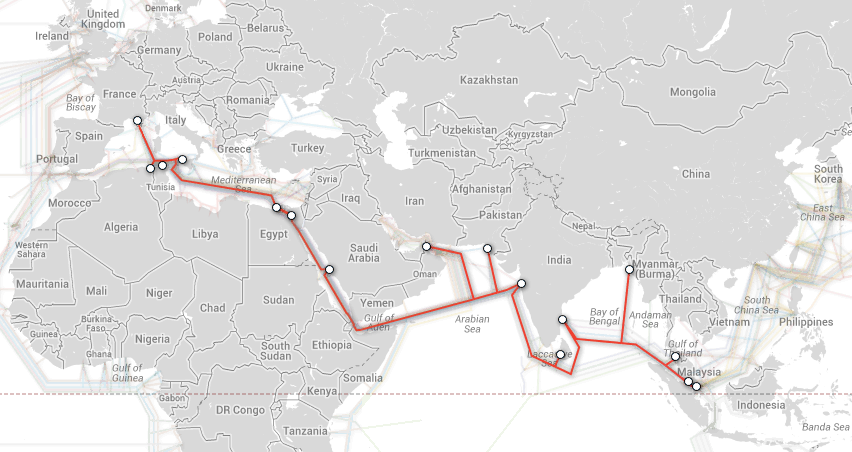Bangladesh Submarine Cable Network
Bangladesh decided to connect to world wide web in late 1995 by VSAT or Very Small Aperture Terminal. On June 4, 1996 the VSAT base data circuit was commissioned for the first time in the country. Upon VSAT commissioning, internet connectivity was established & its services were made available to the public. After internet was launched, the June 1996 National polls results were made available to the netizens of the world using World Wide Web. This was the first ever usage event of its kind in Bangladesh. The effort was appreciated in many corners especially among the Bangladeshis living abroad.
After the introduction of Internet,
email exchange rate was getting hire and other sharing options too. The mid 1996 introduction of Internet did not instantly create a market. At the end of year, there were only two ISPs in the country and the number of users was close to one thousand only. The year 1997 recorded a tremendous growth. The total number of ISPs was more than a dozen and the growth of clients were ten times higher than that of the previous year.
Eventually the growth of ISPs were more than 180 (registered) by 2005.
Then the revolution came, In 2006 Bangladesh got connected to the ” SEA-ME-WE 4 ” Submarine cable. ” SEA-ME-WE ” stands for ” South East Asia-Middle East-West Europe “. This SEA-ME-WE project is being awarded jointly to Alcatel Submarine Networks, France and Fujitsu Ltd., Japan and the estimated project cost is of the order of US$ 500 million.
The total length of the SEA-ME-WE 4 submarine cable system will span approximately 20,000 km which consists of the main backbone across the Eastern and Western worlds plus the extension links in various countries.
It has main terminal station now in Singapore, Malaysia, Thailand, Bangladesh, India, Sri Lanka, Pakistan, United Arab Emirates, Saudi Arabia, Egypt, Italy, Tunisia, Algeria and France.

 The SEA-ME-WE-4 (SMW4) submarine cable system is currently the sole international optic fiber submarine cable landing in Bangladesh. With a cable landing station at Cox’s Bazaar, built and owned by Bangladesh Submarine Cable Company (BSCCL).
The SEA-ME-WE-4 (SMW4) submarine cable system is currently the sole international optic fiber submarine cable landing in Bangladesh. With a cable landing station at Cox’s Bazaar, built and owned by Bangladesh Submarine Cable Company (BSCCL).
Since the landing of SMW4, the Internet infrastructure in Bangladesh has been significantly improved. The SMW4 is now the main link for the international internet gateway in Bangladesh, and is the truly and sole submarine internet cable in Bangladesh.Mango, the only private sector international internet gateway (IIG) operator of Bangladesh, is connected to the global internet using the SEA-ME-WE 4 submarine cable system. Mango won its license through an open auction from Bangladesh Telecommunication Regulatory Commission (BTRC) on February 25, 2008.
The Bangladesh Telecommunications Regulatory Commission (BTRC) issued draft licensing guidelines for two new submarine cable licences in early 2010. Each licensee should build a separate landing station within the general area of Khula-Patuakhali-Barisal-Chittagong, and should provide access, co-location and landing facilities to other submarine cable licensees, as and when required by the BTRC.
Besides the international submarine communication cable connecting Bangladesh, there are three terrestrial cables on India-Bangladesh boarders in Jessore, Sylhet-Comilla and Kurigram which may also bring Bangladesh into the global communication network.
Thank You.
Reference: Submarinecablemap.com & Seamewe4.com